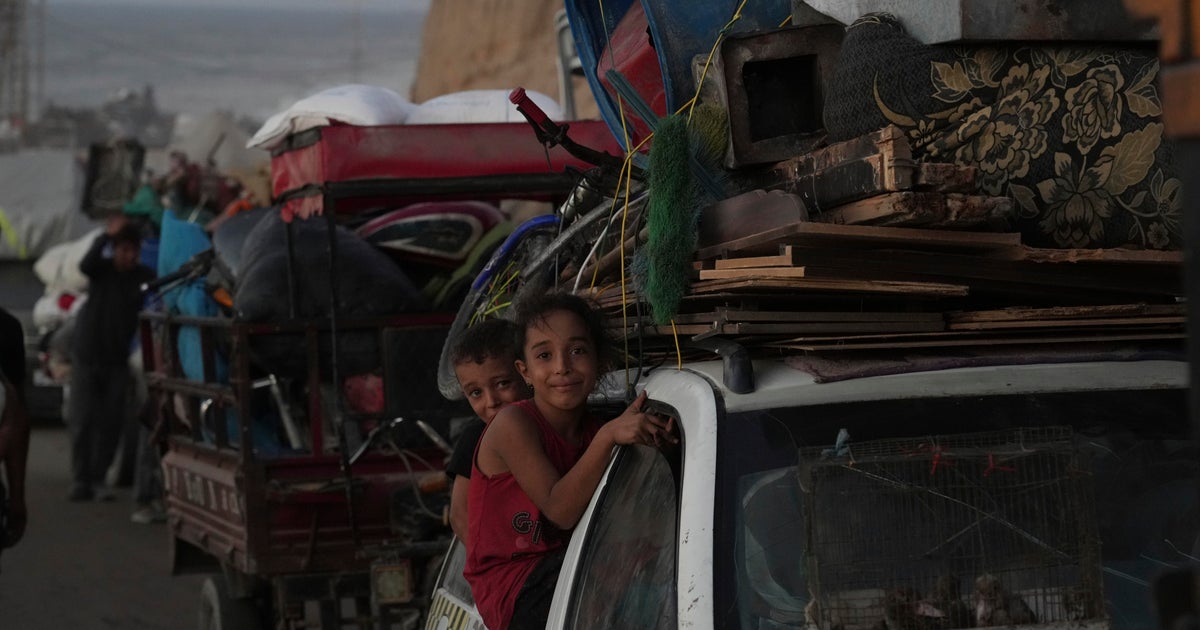What Caused the Recent Israeli Strikes in Gaza City That Left 14 Dead?

Published: 2025-09-20 11:23:01 | Category: Trump GNEWS Search
Overnight airstrikes by Israel in Gaza City resulted in at least 14 fatalities, as confirmed by Palestinian health officials. This escalation in violence comes amidst a broader military offensive by Israel, which has been urging the evacuation of civilians to designated humanitarian zones. The situation continues to deteriorate, with growing concerns regarding the humanitarian crisis in the region.
Last updated: 27 October 2023 (BST)
Key Takeaways
- Recent Israeli strikes in Gaza City have killed at least 14 people, including a family of six.
- The ongoing military offensive has led to over 65,100 deaths in Gaza since early October 2023.
- Israel has opened evacuation corridors, but many Palestinians are unwilling or unable to leave.
- The humanitarian crisis is exacerbated by the destruction of aid deliveries and infrastructure.
- UNICEF reported that vital food supplies for malnourished children were stolen during the conflict.
Background of the Current Conflict
The latest round of violence in Gaza began following a major assault by Hamas on Israeli territory on 7 October 2023, which resulted in the deaths of around 1,200 people, primarily civilians. This attack has prompted a significant military response from Israel, aiming to dismantle Hamas' military capabilities. However, the resultant strikes have led to a staggering death toll and widespread destruction within Gaza.
The Humanitarian Crisis in Gaza
The humanitarian situation in Gaza has reached catastrophic levels, with experts warning of famine conditions. The Gaza Health Ministry reports that over 65,100 individuals have died since the start of the conflict, although the exact number of civilians versus militants remains unclear. Many humanitarian organisations have expressed deep concern over the impact of ongoing military operations on civilians, with estimates suggesting that around 90% of Gaza's population has been displaced.
Evacuation Efforts and Challenges
In a bid to protect civilians, Israel has urged hundreds of thousands of Palestinians in Gaza City to move south to what it designates as a humanitarian zone. Recent military operations have included the opening of corridors to facilitate this movement. Nevertheless, many residents face insurmountable barriers to evacuation, including physical weakness, financial constraints, and a deep-seated reluctance to leave their homes.
Impact of Military Operations
As Israel continues its military campaign, the lack of a clear timeline for the offensive raises concerns about prolonged hostilities and the potential for increased civilian casualties. The Israeli military has stated its objective is to "destroy Hamas' military infrastructure," but the effects on the civilian population are dire. The ongoing destruction of homes and infrastructure has left many without basic necessities, further exacerbating the humanitarian crisis.
The Role of Humanitarian Aid
The delivery of humanitarian aid to Gaza has been severely hampered by the ongoing conflict. Reports indicate that essential supplies are being diverted or stolen, which complicates efforts to address the urgent needs of the population. UNICEF recently reported the theft of lifesaving therapeutic food intended for malnourished children, highlighting the precarious situation for vulnerable populations.
Accusations of Aid Diversion
Israel has accused Hamas of diverting humanitarian aid to support its military activities, claiming that such actions hinder relief efforts. However, the United Nations has maintained that there are mechanisms in place to prevent significant diversion of aid. The conflicting narratives surrounding aid distribution further complicate the humanitarian landscape, leaving many in dire need of assistance.
What Lies Ahead
As the conflict continues, the prospect of a ceasefire appears increasingly distant. The ongoing military operations, coupled with the humanitarian crisis, present a complex and challenging situation for both local and international stakeholders. Aid groups are advocating for a ceasefire to facilitate the delivery of much-needed assistance, but the realities on the ground pose significant challenges to these efforts.
Conclusion
The situation in Gaza remains fluid, with a rapidly escalating humanitarian crisis. As fatalities continue to rise and the infrastructure is systematically destroyed, the need for immediate and effective humanitarian assistance becomes ever more urgent. The international community is faced with a pressing challenge to navigate the complexities of this conflict while prioritising the safety and well-being of civilians caught in the crossfire.
How will the ongoing conflict and humanitarian disaster in Gaza shape the future of the region and its people? The answers remain uncertain as the situation develops. #GazaCrisis #HumanitarianAid #MiddleEastConflict
FAQs
What triggered the current conflict in Gaza?
The current conflict was triggered by a major assault by Hamas on Israeli territory on 7 October 2023, which resulted in significant casualties in Israel and a subsequent military response from Israel targeting Gaza.
How many people have died in Gaza since the conflict began?
Since the onset of the conflict on 7 October 2023, over 65,100 individuals have reportedly died in Gaza, according to the Gaza Health Ministry.
What is the humanitarian situation like in Gaza?
The humanitarian situation in Gaza is dire, with reports of famine conditions, widespread displacement, and significant destruction of infrastructure, severely limiting access to essential resources and aid.
Are evacuation corridors effective for civilians?
While evacuation corridors have been established by Israel, many civilians face obstacles such as financial constraints, physical weakness, and a reluctance to leave their homes, making the effectiveness of these corridors questionable.
What is being done to address the humanitarian crisis?
Various humanitarian organisations are advocating for ceasefires and increased aid delivery, but ongoing military operations and the theft of supplies complicate efforts to provide essential assistance to those in need.



